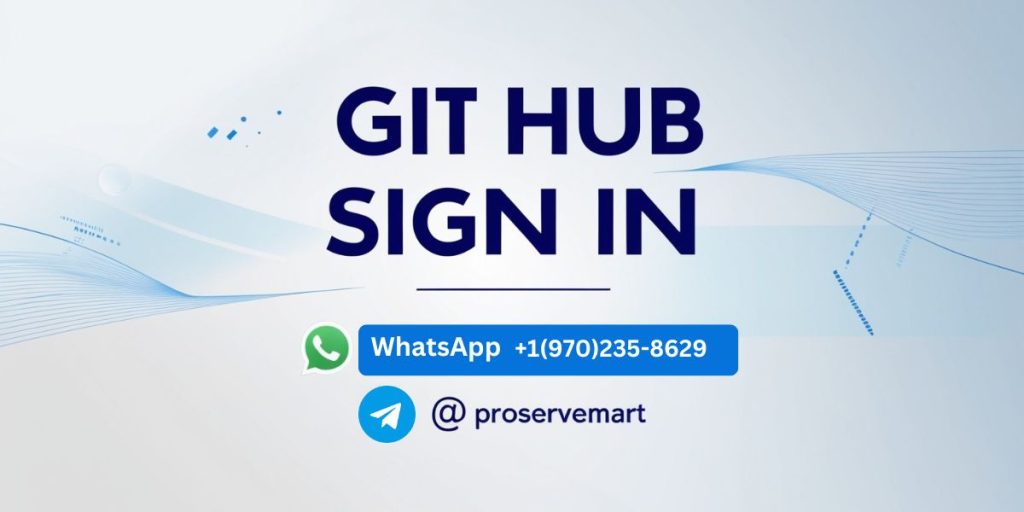Git Hub Sign In
Git Hub Sign In
Git Hub Sign In
Introduction to GitHub
Of all the systems that used in code, GitHub is perhaps most usable by software developers and teams. In which hosting then share and management by different parts of the world application developer this could very helpful so it gives us cloud hosting and share and even management options. Whether you are the Ghost Hacker just trying your hand out on your very first code or the Supernova Hack Master working on yet another world-class project, there’s GitHub to make teamwork a piece of cake.
This blog post looks at what GitHub is, why it is used, how to use it and certain benefits of GitHub before providing few very simple steps on how to log into GitHub and how the tool works.
Git Hub Sign In
What Is GitHub?
Put simply, GitHub is built on Git, system whose job is to record and handle adjustments to the developers’ code. The pretty face on top of Git is GitHub, where developers can create project’s repositories, you can have a repository stored in one place, yet accessible anywhere.
Key features of GitHub include:
- Version Control: Keep track of every change made to a project.
- Collaboration: Work on the same project with team members simultaneously.
- Open Source Projects: Explore, contribute to, or learn from millions of public projects.
- Project Management: Use tools like issue tracking, pull requests, and milestones to organize work.
Git Hub Sign In
Why Use GitHub?
GitHub isn’t just for developers—it’s for anyone involved in managing digital projects. Here are some reasons why it’s widely used:
- Ease of Collaboration: GitHub allows multiple users to work on the same codebase without conflicts. It’s perfect for teams.
- Backup and Security: Your code is safely stored in the cloud, preventing data loss.
- Showcasing Skills: Many developers use GitHub as a portfolio to showcase their work.
- Open Source Contribution: You can learn from others and contribute to open source projects.
- Integration: GitHub integrates seamlessly with tools like Visual Studio Code, Slack, and project management platforms.
How to Use GitHub
If you’re new to GitHub, here’s a simple guide to get started:
Step 1: Create a GitHub Account
- Go to GitHub’s website.
- Click on Sign Up and enter your email address, username, and password.
- Complete the verification process and customize your account.
Step 2: Sign In to GitHub
Once you’ve created an account, follow these steps to sign in:
- Go to the GitHub login page.
- Enter your email or username and password.
- Click Sign In.
Git Hub Sign In
Step 3: Create a Repository
Repositories are where your projects live. To create one:
- Click on the New button from your GitHub dashboard.
- Add a name and description for your repo.
- Choose public (visible to everyone) or private (visible only to you and your collaborators).
- Click Create Repository.
Step 4: Push Code to GitHub
Once your repository is created, you can push your code from your local machine to GitHub. Here’s how:
- Install Git on your computer.
- Use the following commands in your terminal:
Git Hub Sign In
Benefits of Using GitHub
Working with GitHub has a lot of benefits regardless if you are working alone or in a team. Let’s look at some key benefits:
- Version History: GitHub stores a record of all the records made and this can be easily rolled back to the previous versions.
- Team Collaboration: It means developers can change the same file without the risk of putting their changes over the other’s work.
- Code Review: Merge requests facilitate a process by which only other members of the team get a chance to review comments and changes prior to committing such changes to the main branch.
- Accessibility: GitHub is works on projects from cloud-based platform hence clients can work on their projects while at comfort of their homes.
- Community Support: As millions of users are present you can find help, tutorials and examples all over the internet.
Who Should Use GitHub?
GitHub is designed for anyone working on digital projects. Here’s who benefits the most:
- Developers: Manage code and collaborate on projects.
- Students: Learn coding and contribute to open source.
- Project Managers: Use GitHub to track progress and manage tasks.
- Designers: Share and collaborate on design assets.
- Data Scientists: Manage datasets and code for analysis.
GitHub for Beginners
If you’re just starting with GitHub, don’t worry. Here are a few tips to make your journey easier:
- Explore the GitHub Learning Lab for interactive tutorials.
- Practice by contributing to open source projects.
- Use GitHub’s desktop app if you’re not comfortable with the command line.
Git Hub Sign In
Common GitHub Terms You Should Know
- Repository (Repo): A project folder on GitHub.
- Commit: A saved change to a file.
- Branch: A copy of your code where you can make changes without affecting the main project.
- Pull Request: A way to suggest changes and collaborate.
- Fork: A personal copy of someone else’s repository.
- Issue: A way to report bugs or suggest new features.
How GitHub Makes Work Easier
GitHub isn’t just a code-hosting platform. It’s a complete ecosystem for project management, collaboration, and learning. By using GitHub, you can:
- Save time with automated workflows through GitHub Actions.
- Keep projects organized using built-in project management tools.
- Gain insights into your work with advanced analytics.
- Collaborate with a global community of developers and creators.
Conclusion
GitHub is as simple as a unit of handling for someone that has to transmute on any digital projects. It gave the user with codes/database of shares, to host codes, rewarding features for the development teams and programmer when developing phase. More elaborately, you can authenticate, create a repository and use GitHub as described above.
So do not waste time. Log into GitHub now, so that you may make something amazing and expand the limits!
Contact us for 24 hours reply/customer support and more details.
Email:- [email protected]
Telegram:- @ProServeMart
Skype:- Proservemart
WhatsApp:- +1(970)235-8629
If you want to take a GitHub account, you can click here.





